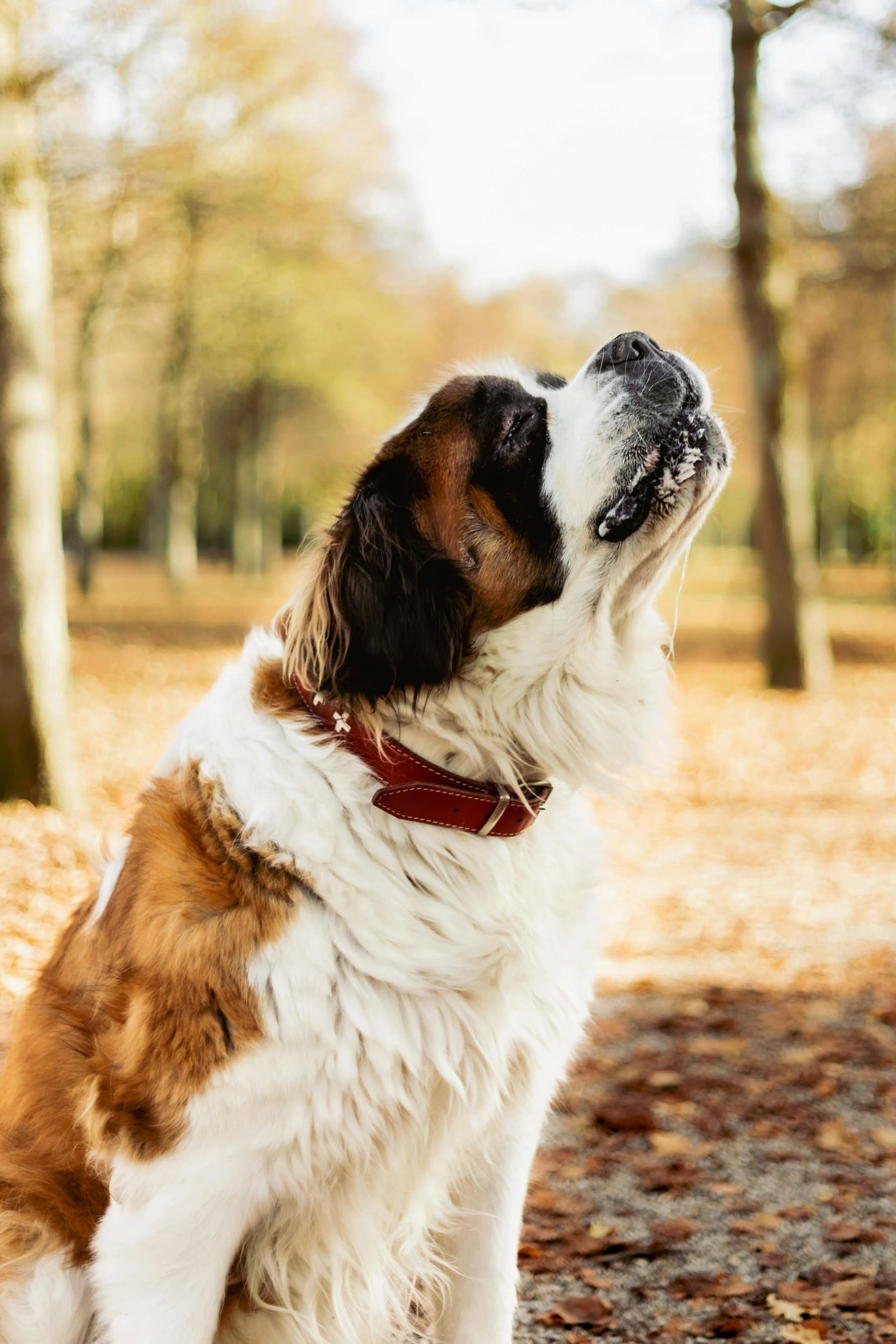Saint Bernard

Height
Male: 66-76 cm, Female: 66-76 cmWeight
Male: 54-82 kg, Female: 54-82 kgPedigree
YesLifespan
8 to 10 yearsPros
- Loyal
- Gentle
- Affectionate
- Good with children
- Patient
- Calm
- Protective
- Trainable
- Courageous
- Adapts well to cold climates
- Relatively low energy indoors
Cons
- Excessive drooling
- prone to bloat
- relatively short lifespan (7-10 years)
- can be stubborn to train
- heavy shedding
- expensive to feed
- potential for health problems (hip/elbow dysplasia
- heart issues
- eye problems)
- requires a lot of space
- prone to heatstroke
- not ideal for hot climates
- can be destructive if bored or under-exercised
- strong-willed.
Introduction to the Saint Bernard
The Saint Bernard is a breed of very large working dog from the Swiss Alps. They were originally bred for rescue work by the hospice of the Great St Bernard Pass on the Italian-Swiss border. These gentle giants are known for their strength, loyalty, and iconic rescue missions in snowy terrains.
Saint Bernards possess a calm and patient demeanor, making them excellent family pets. They are especially good with children, though their size requires careful supervision. Despite their large size, they are relatively inactive indoors and enjoy cuddling with their families.
History of the Saint Bernard
The Saint Bernard's history dates back to the 17th century, when monks at the Great St Bernard Hospice used them as guard dogs and companions. Over time, the monks discovered their ability to find and rescue lost travelers in the treacherous mountain passes. The dogs' thick fur and natural instinct for finding lost souls made them invaluable assets.
Legend has it that a Saint Bernard named Barry saved the lives of over 40 people during his lifetime. While likely embellished, the story highlights the breed's remarkable rescue abilities and the monks' dedication to helping those in need.
The Saint Bernard's popularity spread throughout Europe and eventually to other parts of the world. Today, they are cherished as loyal companions and symbols of bravery and compassion.
Interesting facts about the breed
- They are named after the Great St Bernard Hospice in the Swiss Alps.
- Saint Bernards were originally much lighter in build before being crossed with other breeds like the Newfoundland.
- A Saint Bernard named Barry is credited with saving over 40 lives.
- They are known for carrying small barrels of brandy, though this is largely a myth.
- Saint Bernards require regular grooming due to their thick fur.
- They are prone to certain health issues like hip dysplasia and bloat.
Characteristics
Apartment Suitable
Beginner Friendly
Hardiness
Independence
Tolerates Cold
Tolerates Hot
Friendliness
Affectionate With Family
Kid Friendly
Dog Friendly
Stranger Friendly
Grooming
Shedding
Drools
Ease of Grooming
Health
Gains Weight
Ease Of Training
Intelligence
Prey Drive
Vocality
Wanderlust
Need for Attention
Activeness
Intensity
Excercise Needs
Are you looking to buy the Saint Bernard breed?
See current available pets or share this breed with your friends!